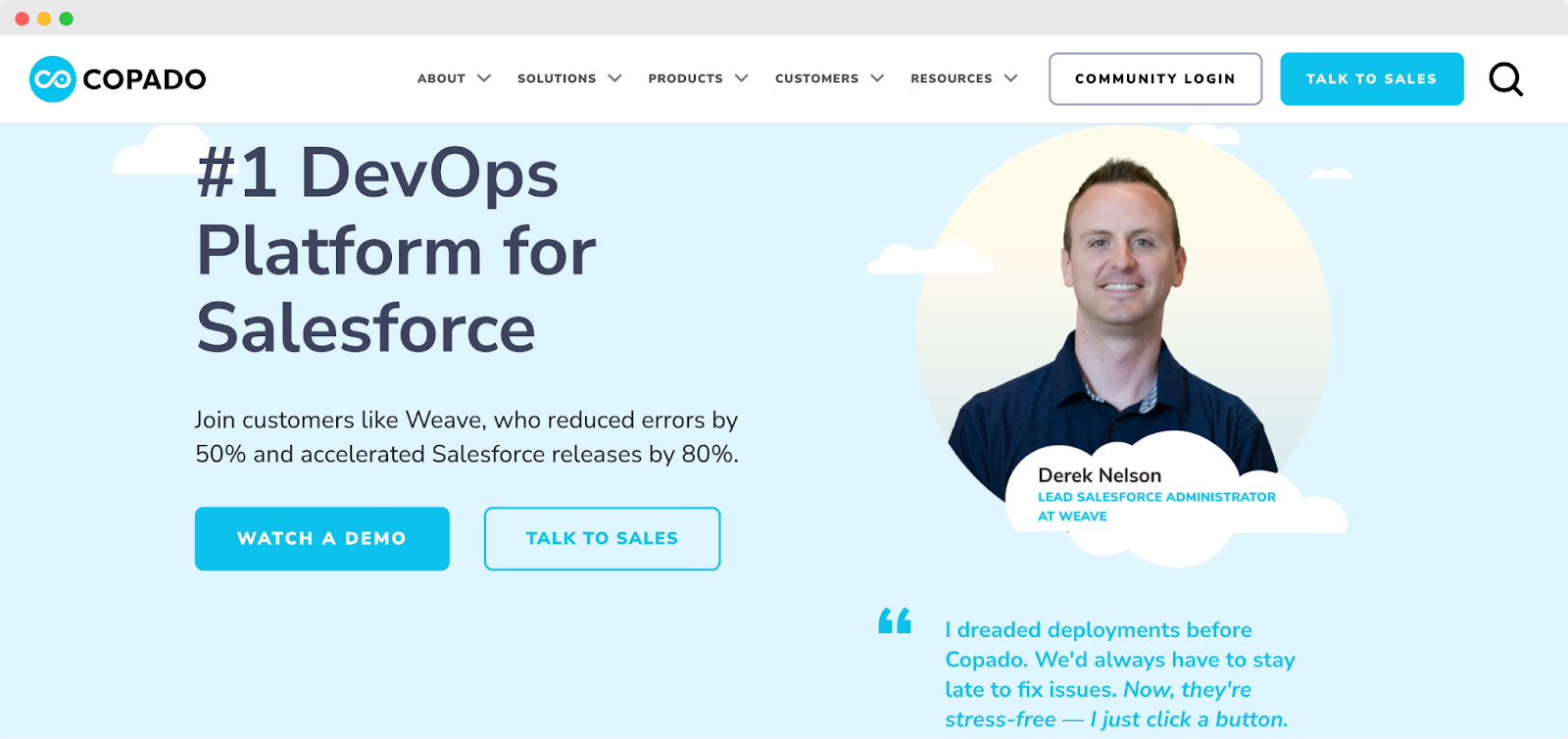One
In this grand adventure, tools like Hutte emerge as the bridge, effortlessly connecting individuals of diverse backgrounds and skill levels. Collaborate effortlessly,

They automate tasks such as version control, automated testing, and continuous integration/continuous delivery (CI/CD), guaranteeing seamless and flawless deployments.
Moreover, these tools foster collaboration among development teams, facilitating coordination, enhanced visibility, and effective change management.
By doing so, they assist organizations in achieving accelerated time-to-market, heightened agility, and enhanced reliability for Salesforce applications.
Two of the top Salesforce DevOps tools in the market are Copado and Salto.
Now, let's delve into the offerings, advancements, and constraints of these three tools in the realm of Salesforce DevOps.
Best For Release Management: Copado 🎉

Image Source: Copado
Pricing: Plans that range from $2K and above.
Core features: Automated (robotic) UI testing, multi cloud deployment, continuous delivery for deployment processes, and built in governance and compliance.
Copado is a renowned cloud-based platform that facilitates efficient DevOps and release management for Salesforce applications.
It encompasses a comprehensive suite of tools and features that cater to the entire application development lifecycle, including planning, building, testing, deployment, and release.
With its wide array of capabilities, Copado has gained popularity among organizations seeking to streamline their software development and deployment processes. It provides numerous benefits, aiding in the seamless management of Salesforce applications throughout their lifecycle.
Here are some of the key benefits of using Copado:
The tool is designed to scale to the needs of any organization, whether it's a small business or a large enterprise
Copado enables agile development
With Copado, you can easily manage and track changes to your Salesforce code and configurations
It offers robust security features to protect your Salesforce data and configurations
Copado's automation features help to streamline the software development process
Copado’s limitations include:
Copado is a comprehensive Salesforce DevOps platform with many features and capabilities
Copado is a subscription-based platform, which involves ongoing costs for organizations
Copado integrates with various external systems, such as version control repositories, CI/CD tools, and deployment environments
Implementing and managing Copado effectively may require dedicated resources, including administrators or DevOps specialists who can oversee and maintain the platform
Best For Exploring Metadata: Salto

